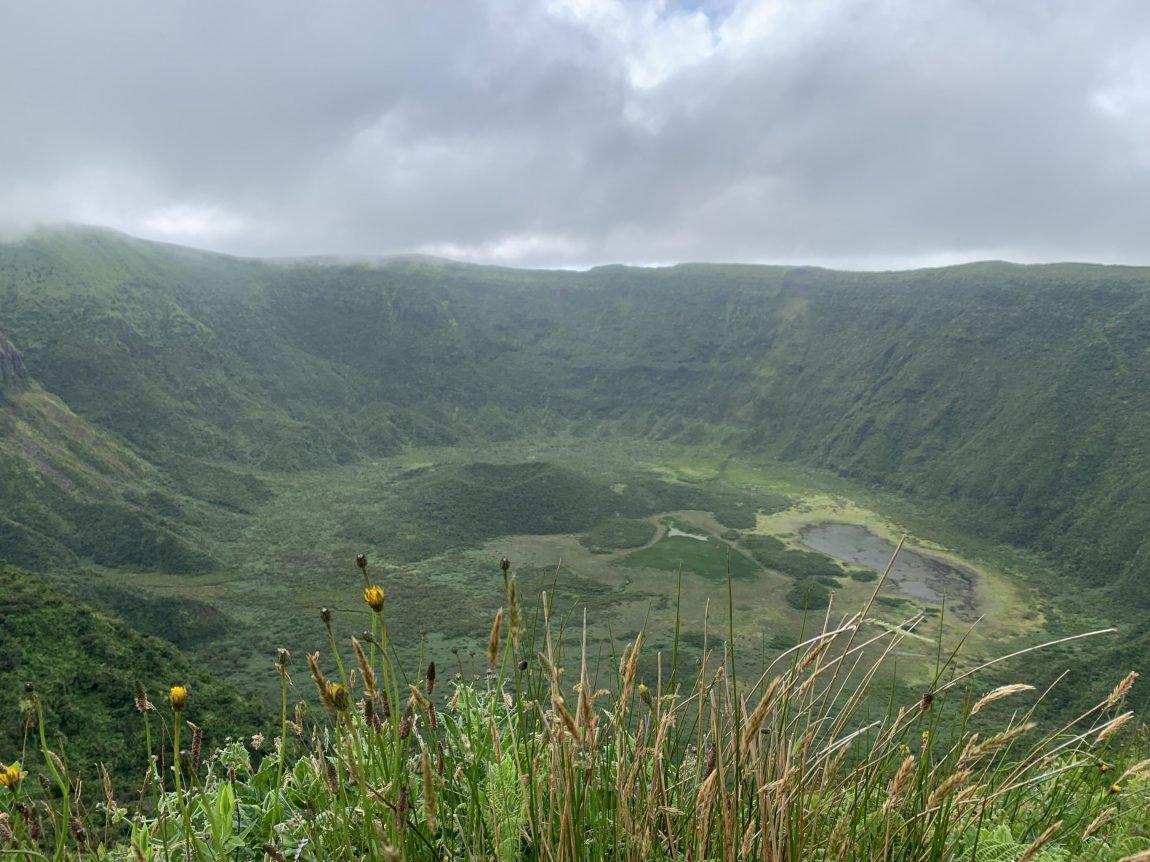Note: This is a guest post by Brady Trautman of SV Delos.
Sailing across an ocean is a humbling experience!
Over the past ten years, I’ve been fortunate enough to live a lifestyle that allows me to experience the world by boat, crossing vast distances by the power of the wind, and experiencing a way of traveling that in my opinion, is matched by no other.
Sharing our adventures on YouTube aboard SV Delos, a 53-foot bluewater yacht has taken our crew to some of the most remote places on earth.
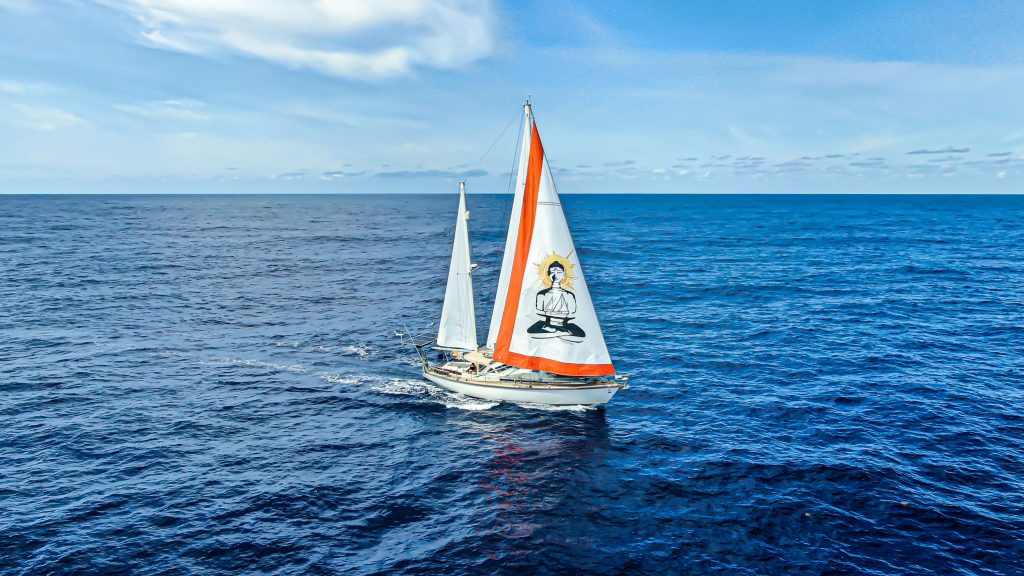
Over the years we have had over 50 crew join us on our filming adventures. From tiny islands in the Pacific Ocean to far-flung anchorages in the Caribbean, Africa, and the Indian Ocean, we’ve visited places on earth that have inspired, exhilarated, and mystified us.
Our most recent passage saw us heading east from Bermuda, sailing 2,500 miles across the North Atlantic Ocean, arriving into the archipelago known as the Azores.
This sprinkle of land in the vast Atlantic Ocean, about 800 miles west of Portugal, offers sailors and intrepid travelers, a lush, volcanic sub-tropical wonderland, free of the many tourists, hassles and high prices found in mainland Europe. The island of Faial is the most central of the 9 islands of the Azores, offering those lucky enough to visit some truly memorable experiences.
This itinerary assumes you have rented a car in order to best explore Faial. If not, you’ll likely need to hire a taxi to take you around the island; however, it’s much cheaper to rent a car in the Azores.
Not sure where to get the best deal on your rental? I’ve rented cars dozens of times through various search engines and have settled on Discover Cars as the best car rental search engine – it searches over 500 trusted rental companies to find the cheapest price for your rental! Compare prices for car rental in Faial here.
Here are the best things to do in Faial, Azores!
Visit the Horta Marina

The Horta Marina is perhaps the most famous in all the Azores.
Throughout the centuries, boats making their way across the Atlantic would find refuge in her sheltered waters after many days at sea, and after encountering some pretty gnarly conditions during our passage from Bermuda, we were keen to do the same.
Stepping onto the dock, the first thing we noticed were the murals that adorn almost every surface of the marina. Hand-painted logos left by previous sailors who had made the long journey across the North Atlantic, only enriched the experience of stepping onto land after so long at sea.
It became quickly apparent that the residents of this marina were a little different from those we had seen in the Caribbean, there were no flashy charter boats, just rough and ready ocean-going vessels, salty from the thousands of miles put under their keels.
As we walked the docks, the smiles and nods received from fellow sailors created an undoubted feeling of kinship, we had all arrived by sea, travelling across the globe in our tiny boats, eliciting wind from mother nature while desperately hoping we didn’t encounter her full wrath.

Have a drink at Peter’s Bar
Landfall in Horta means a visit to Peter’s Cafe Sport (bar), a famous establishment run by generations of a Portuguese family.
The atmosphere is rich, the food and drink plentiful and the service welcoming. Horta’s history as a whaling town becomes obvious in the photographs, carvings, and unforgettable scrimshaw that adorns the bar’s walls.
Scrimshaw, which is intricately carved ivory whales teeth, are truly works of art. Hauntingly beautiful pictures of tall ships, sunsets, wives, and newborn babies so delicately and painstakingly inscribed, bought, and sold in days of old as a way for the whalers to make money.
Although the whaling industry is long gone, its impact on Faial is long-lasting, and the local whaling museum found upstairs, gives a real insight into how these starving farmers could make a living. It was hard to decide what was more enjoyable, drinking beer with the Portuguese locals, swapping stories with other yachties or marveling at the bar’s paraphernalia.
Check out the vista at Capelinhos

Faial has one of the Azores’ most dramatic volcanic landscapes, located on the western peninsula, at Capelinhos. In the 1950s, volcanic eruptions created over 2km² of new land, this natural phenomenon caused massive damage to the environment and triggered a wave of emigration, as locals fled to America after losing their homes and livelihood.
The volcanic slopes can be observed from a viewing platform perched high on a cliff. Looking out at this baron otherworldly landscape, with the ocean pounding the rock face, is a reminder of nature’s power and beauty.
Observing what was probably the newest piece of the earth the Delos crew had ever seen was a reminder that Mother Nature is still doing her thing. The history of the volcano is well documented, and the Capelinhos Interpretation Centre, a building constructed entirely underground, has detailed exhibits that explain its formation, as well as how volcanoes around the world develop and the history of the lighthouse that towers over the center, which can be climbed for another viewpoint.
Join the locals at Porto do Comprido
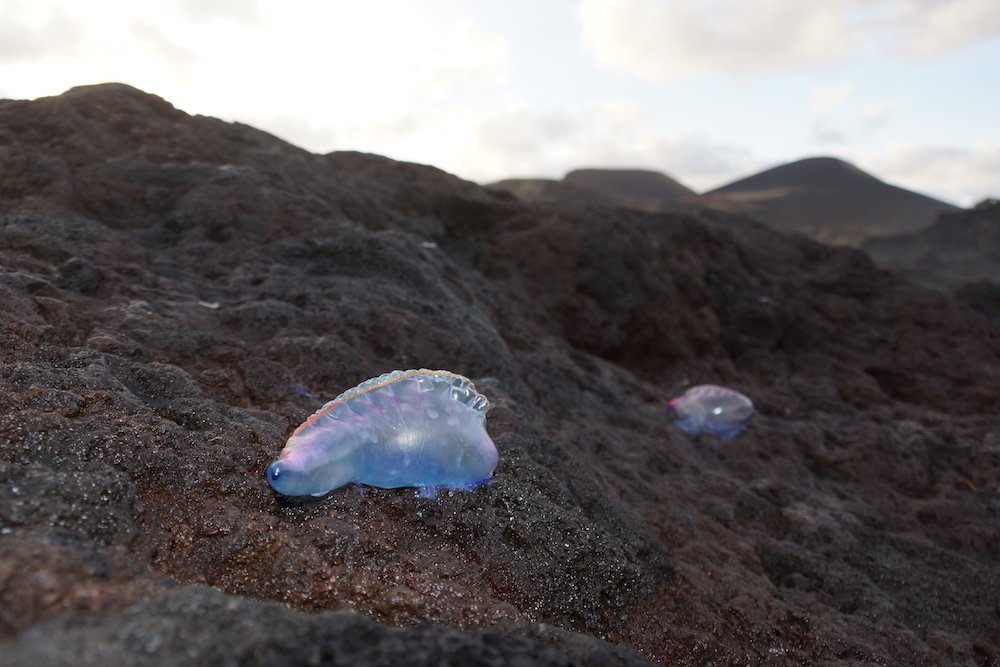
When the sub-tropical sun is out, and the breeze is warm, the locals head to Porto do Comprido, a natural swimming pool formed in the jagged volcanic rock nearby.
This spot is a photographer’s dream, with the contrast of water, rocks, cliffs, and the lighthouse providing a perfect backdrop. Slipping into the cool Atlantic water of the pools, as the swell slowly rises and falls, gazing at the coastline before you, is truly a surreal experience — just be sure to stay clear of the phenomenally purple Portuguese Man-O-Wars that inhabit the area.
These interesting creatures float in the water, their little sail in the air, hoping the trade winds will blow them towards their next meal, or an unsuspecting swimmers leg!
Marvel at the Caldeira
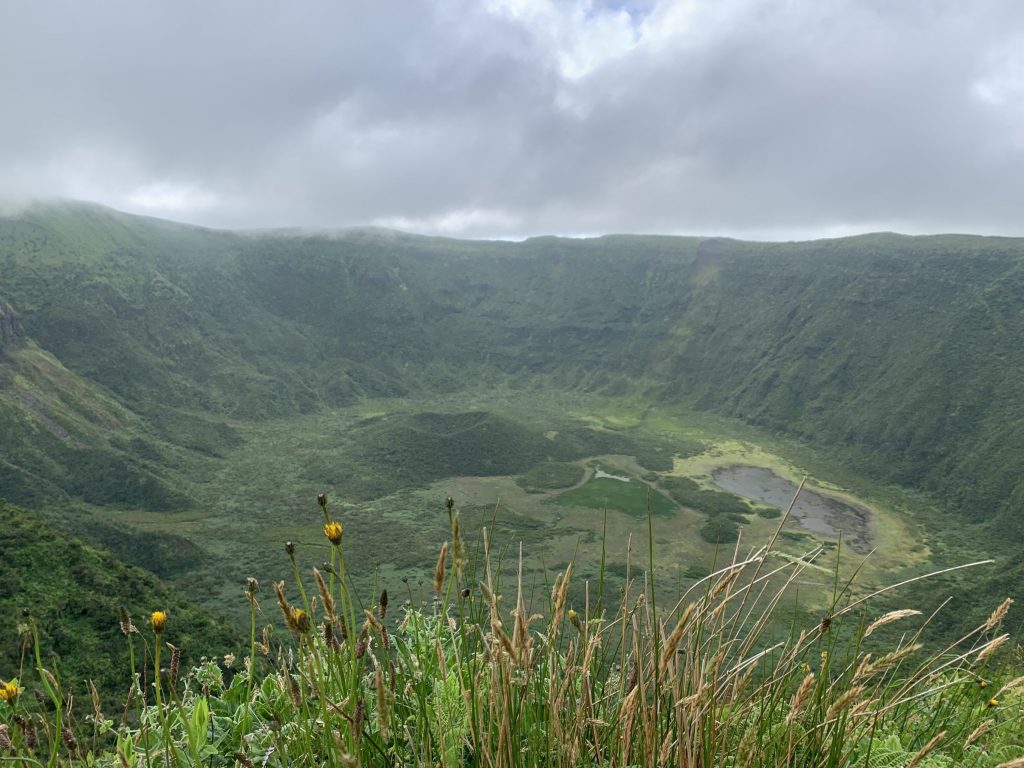
Visiting the Caldeira is perhaps one of the most well-known things to do in Faial. Located in the middle of the island, it is a two-kilometer wide, 400-meter deep volcanic cone.
This nature reserve showcases the rare flora species found in the Azores, and with stunning views of not only the crater but the towering Pico island to the east, it is one of the best vantage spots in the Azores.
On a clear day, high atop the Caldeira’s rim, you will feel among the clouds, watching the mist flow in as the cool moist air blasts your face. For those who like to get down and dirty, it is possible to take a trek into the crater, however, to protect the natural plant species, the local tourism authority only allows a limited amount per day.
There is also a slightly more forgiving goat trail along the rim of the crater, where every vantage point of this incredible natural showpiece can be experienced.
Experience the countryside while horse riding
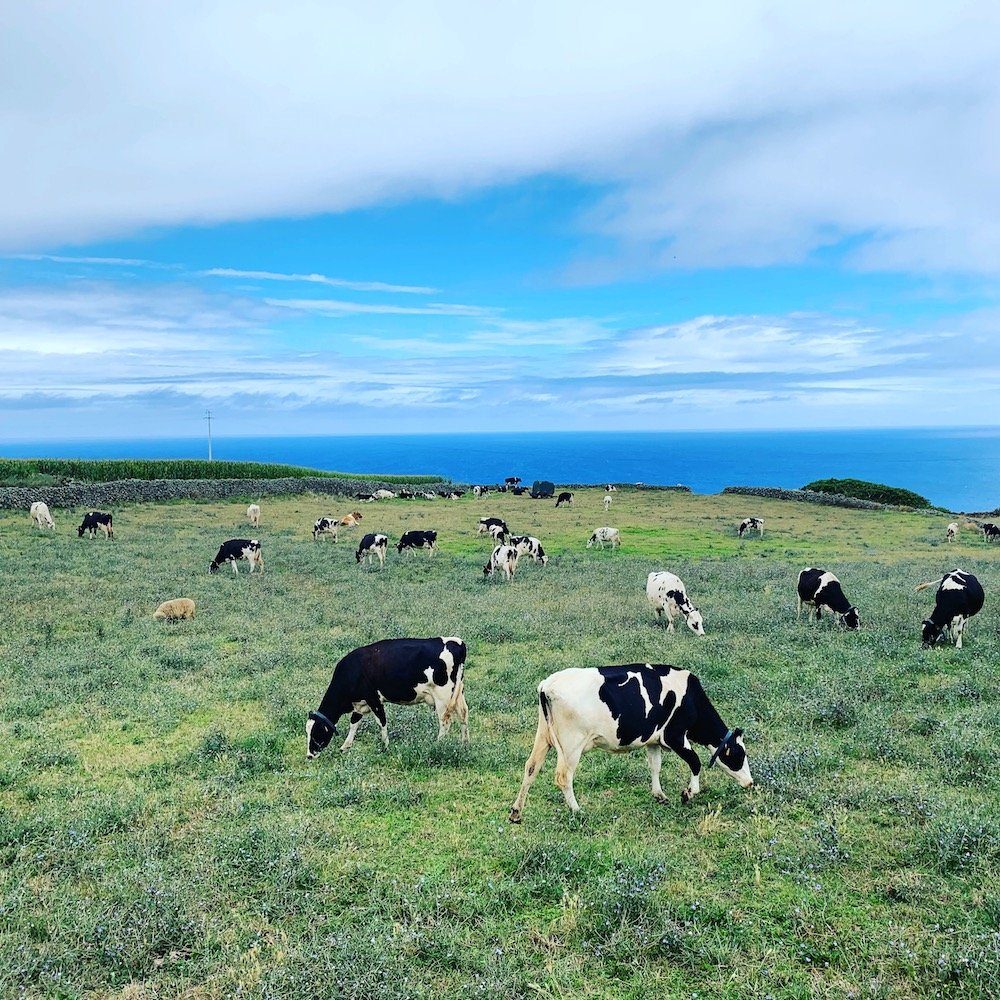
Something we rarely have a chance to do as sailors is to throw a leg over a horse and gallop through the countryside, lucky for us, Faial has some great horse riding opportunities for beginners and the experienced.
The first thing you notice when riding your horse along a trail, or any road in Faial for that matter, are the hydrangeas lining the roadside. In full bloom, it is literally impossible to take a photo anywhere on the island without a purple green and white bouquet in the background.
They cover Faial in their tens of thousands, only adding to the magic of this European wonder. The sub-tropical climate means the Azores is lush with vegetation, which keeps the local cows happy as they munch on grass in the stone-walled fields.
The views from the rugged clifftop coastline are intoxicating, the air fresh and the water blue. Our horses took us through trails we would never have known to walk down and was a great way to see the local communities and to learn about the islands day to day life.
Try your hand at surfing
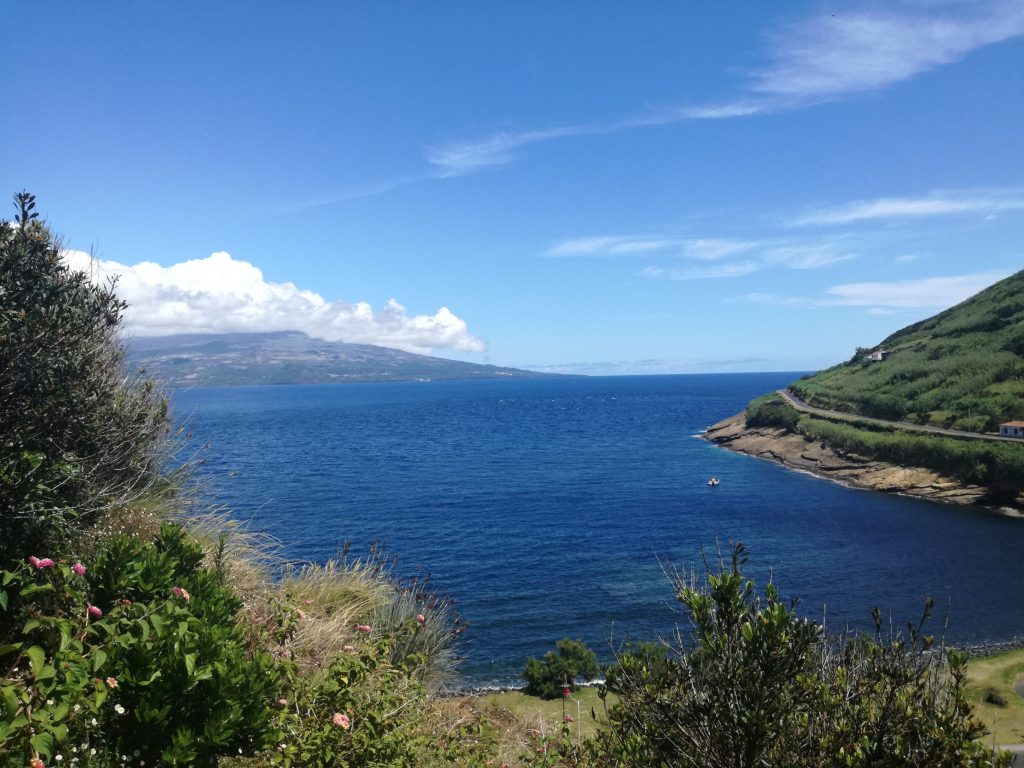
The Azores Islands are well known among the surfing community for their uncrowded volcanic point breaks. Since safe anchorages or marinas are usually at the opposite end of the island than the surf breaks, you definitely have to put in the work to catch waves as a sailor in the Azores.
The time of year for surfing is from September to December, by constantly watching the weather and waiting for a low-pressure system to roll across the North Atlantic, you will have an opportunity to find the swell. The ideal time to jump in the water is just after a low swings past so the wind will switch to offshore.
Entry into the water can be tricky, having to jump off rocks and inevitably scramble back up them. There are also the ever-present Portuguese Man of Wars to be dodged!
Each surf is a challenging but rewarding mission that usually starts with walking a few hours uphill and often ends by sleeping in the rain on the beach. Anyone reading this may call us surfers crazy for going through all this trouble just to catch a wave, but for us, the challenge is all part of the adventure.
Hiking with surfboards and friends, catching rides with locals, exercising our bodies, acquiring some simple scars along the way all make for a good story. The moments when you find yourself in glassy water with chest high waves, offshore winds, and your buddies by your side makes it all worth it.
Experience shark diving
The Azores is known as Europe’s premier whale watching destination. With pristine waters that descend to the black depths of the deep, whale and dolphin sightings are common, however, we were keen to do something a little different, diving with blue sharks!
After meeting up with one of the local dive shops, we organized a crew to take us out to an area known for mako and blue shark sightings. With our guide chumming the water to get the scent of blood out there (a practice we don’t necessarily agree with) the sharks soon turned up.
Diving with these amazing creatures in the clear cool Azorean waters was phenomenal. The blue sharks looked like 6 feet long puppy dogs, playful and inquisitive, not like the hammerheads and bull sharks we had experienced in other parts of the world. Watching these sublime creatures glide through the water was a massive rush.
Go scuba diving
Faial is known for some incredible diving, and it didn’t disappoint. Another area just off the coast of Faial is the Princess Alice Bank, a spot where the ocean floor rises and the water is only 35 meters deep.
Scuba diving here has a very different feel than close to shore, with open water all around and nothing but you and a few other dive boats, it’s a rare spot.
The 45 mile trip to this location was well worth the effort, as we found ourselves diving with massive manta rays as big as a dining room table.
In 100 meters of clear blue water, among a school of thirty of these graceful creatures gliding past, seemingly unknowing of our existence and with only the sound of air bubbles rising from our scuba tanks, it was impossible to not feel totally at peace.
Take a quick visit to Pico
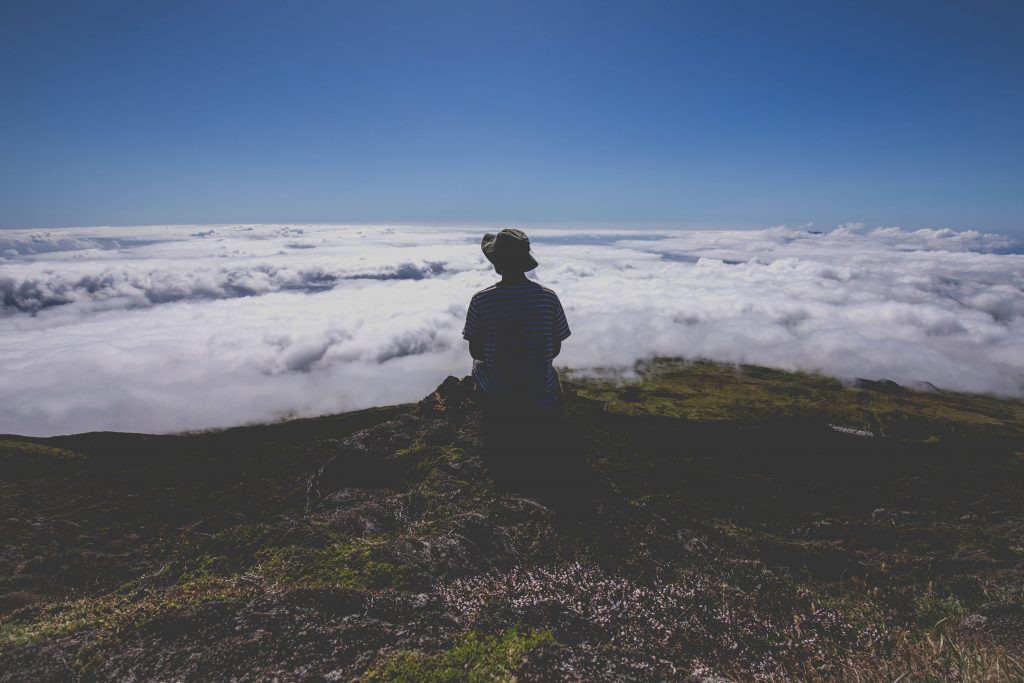
Although not technically on the island of Faial, it is impossible to avoid the allure of the neighboring island of Pico.
The incredibly high peak of this volcanic beauty, which rises almost 8,000 feet out of the ocean and is Portugal’s highest point, is not easily missed.
A very short ferry trip across the channel from Faial brings you to this towering beauty, which can be hiked but is not for the faint-hearted, taking 5 to 7 hours depending on your fitness level.
After registering with the authorities at the base of the mountain, and receiving our GPS trackers so they could track our whereabouts, we were free to explore the steep slopes.
It is possible to pitch a tent in the crater of the volcano and stay the night, and even though it wasn’t the most comfortable thing to do, the evening sunset and the morning sunrise were spectacular, well worth the effort of lugging a tent and filming gear to the summit.
Looking out over the clouds, a perfect view of Faial and the vast Atlantic Ocean reminded us of the reason we travel far and wide over this incredible blue planet.
***
The Azores is a place that has something to offer everyone, the Portuguese people are proud of their islands, their culture, and their long history. It’s obvious to anyone visiting this archipelago that the natural environment plays an important part of life here, and the people have done an amazing job of integrating society with it.
Although there are plenty of cafes, shops, and buildings, they are built in a way that ties them to the land, often created from stone and wood. The pace of life is slower, and people take the time to enjoy life’s little treats, like sharing a coffee with friends, enjoying a view or swimming in the volcanic pools.
If you decide to travel to the Azores, you will not find white sandy beaches with coconut trees, but you will find a lush, subtropical, volcanic paradise largely unspoilt by human interaction.
About the Author
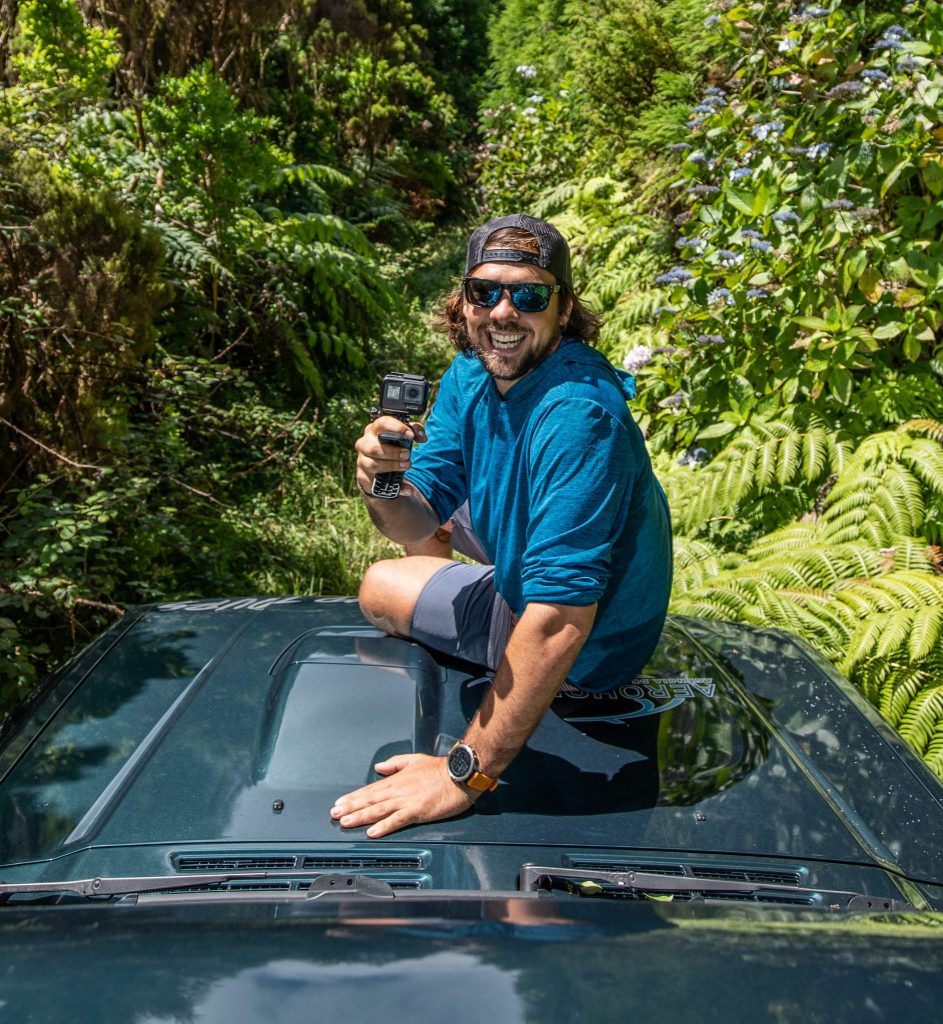
Joining Delos in 2010, Brady Trautman brings an essential element to the Delos brand. With his easy-going vibe, infectious smile, and quick wit, he ensures laughter and love are felt by all those around him. Originally from Florida, Brady studied environmental engineering before making the transition to full-time sailing.
Brady’s skills in marketing, video editing and qualifications as a Dive Master, Dive Instructor and Rescue Diver have played a huge part in keeping Delos in the top echelon of YouTube sailing channels, all the while inspiring others to follow their dreams. With his charismatic personality, he is at home around people, no matter where in the world he is, he will find a way to connect with others and share the Delos love. You can follow Brady on Facebook and Instagram.
Allison Green is a former teacher who has been travel blogging since 2016. She has a Masters in Teaching and a B.A. in English and Creative Writing. Her blog posts merge her background as an educator with her experience traveling to 70+ countries to encourage ethical, meaningful travel. She has been a speaker at the World Travel Writers Conference and her writing, photography, and podcasting work has appeared in National Geographic, CNN Arabic, CBC Canada, and Forbes, amongst others. Now a full-time traveler, she has lived in Prague, Sofia, New York City, and the San Francisco Bay Area.
